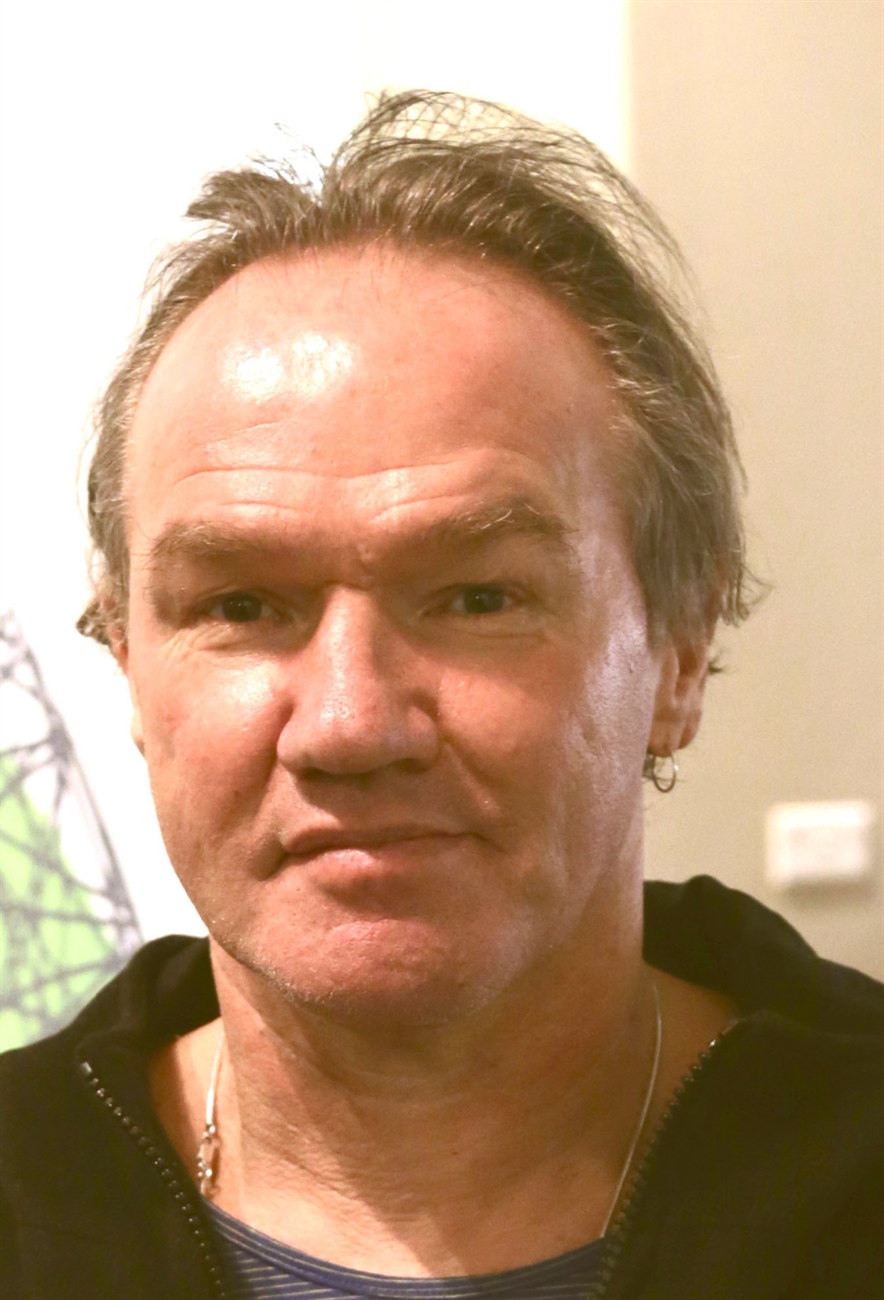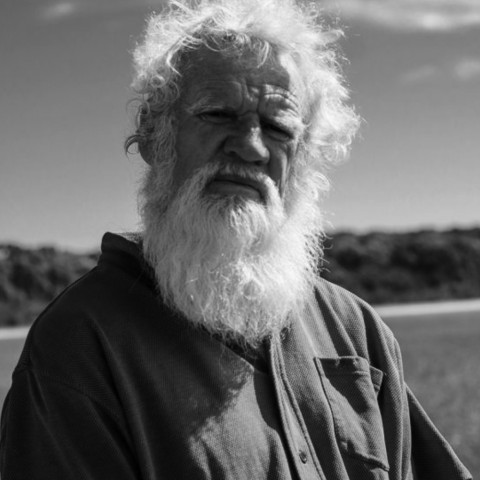AustLit
-
Below are a selection short stories by Aboriginal or Torres Strait Islander writers and each of the stories is available in full text format online.
From a curriculum perspective, they are especially suitable for use in the Middle and Senior Years as own-choice reading for students, to develop comprehension and/or to model features of short story writing. Use them by themselves, centre one or more of them in a general short story/creative writing unit, and/or use them to focus on writing by Aboriginal and Torres Strait Islander Peoples.
-
From the perspective of ACARA's Aboriginal and Torres Strait Islander Histories and Cultures Cross Curriculum Priority, the stories may contribute to a number of Organising Ideas, including:
Organising Ideas: Aboriginal and Torres Strait Islander Histories and Cultures
Code
Organising Idea OI.2 Aboriginal and Torres Strait Islander communities maintain a special connection to and responsibility for Country/Place. OI.3 Aboriginal and Torres Strait Islander Peoples have holistic belief systems and are spiritually and intellectually connected to the land, sea, sky and waterways. OI.5 Aboriginal and Torres Strait Islander Peoples' ways of life are uniquely expressed through ways of being, knowing, thinking and doing. OI.6 Aboriginal and Torres Strait Islander Peoples live in Australia as first peoples of Country or Place and demonstrate resilience in responding to historic and contemporary impacts of colonialism. OI.8 Aboriginal and Torres Strait Islander Peoples' family and kinship structures are strong and sophisticated. Of special interest is OI.9: The significant contributions of Aboriginal and Torres Strait Islander Peoples in the present and the past are acknowledged locally, nationally and globally. It is hoped that these classroom resources will celebrate the diversity and scope of contemporary Aboriginal and Torres Strait Islander writers, and broaden their readership.
Factors relevant to use in particular school contexts (e.g. coarse language or sexual references) are made explicit at the beginning of each story.
-
Please remember that this is a small, curated selection of short stories written by Aboriginal and Torres Strait Islander authors. Regard this as a starting point in a journey of literary exploration.
Note: For consistency, the comprehending questions for each story use the taxonomy or skills for reading and interpreting fiction designed by George Hillocks and Larry Ludlow (1984) (also see pages 5-9 of this NCTE publication). However, it is not intended that these be used as the sole strategy for supporting students to explore the stories. As relevant, further suggestions have been made as a starting point. -
Scroll down the page to see the range of stories covered by these lesson plans, or select a story from the table below to jump directly to that section.
-
About the author
Professor Tony Birch is an award-winning Indigenous writer. His books include The White Girl (2019), Common People (a short story collection, 2017), and Ghost River (2015) which was developed from the short story currently being examined.
Summary of story
The unnamed narrator and his friend, Sonny, aim to be outlaws and spend much of their time with the river boys, a group of older men who live on the river and (at first glance) might be considered nothing more than alcoholics. However, through Moses, 'the undisputed boss' of the river boys, the narrator and Sonny learn more about the river, the 'ghost river'. After the death and disappearance of all of the men but Moses, the boys are told by him to leave and stop wasting their lives - to 'grow up'. However, the narrator does not understand what Moses is trying to tell them until an enigmatic, near death encounter with the river.
Genre
Narrative to resolve a complication in a story - although there is a story within a story as well
Features of interest- the weaving together of past, present and future
- the use of first person narration
- the exploration of people's relationship with country
- the story was developed into a novel of the same name
Reader advisory
The story contains occasional coarse language. -
Comprehending
In order to scaffold understanding and interpretation of the story, students can work individually or in small groups to answer these questions.
Additionally, students could be asked to:- read other descriptions of the Yarra River (the setting for the story), including one from the Melbourne tourism site and this one from the ABC, 'Is it safe to swim in the Yarra River? Well, it's complicated'. Compare these with Tony Birch's descriptions and discuss what this reveals about different attitudes, beliefs and values regarding the natural world and the place of humans in it.
- read the novel, Ghost River, which was developed from this short story. More information can be found in this review from The Guardian and further details are on the AustLit website.
Writer's Craft: StructureIn many ways, this is a straight forward story which unfolds chronologically. However, it is worthwhile examining how Birch weaves together past, present and future, e.g. by weaving in the story of 'the Ghost River' and connecting that to the fates of the river boys, through references to story (e.g. 'Each of the river boys carried the story of his life...') and seemingly premature reveals about characters' fates (e.g. re Moses: 'He slowed down round the fire, could hardly sing a note and ended up blind in one eye.'). Consider the effect of this approach on readers.
Visit the Reconciliation Australia website and discover more about Dreaming. Consider the ways these ideas are present in Birch's story 'The Ghost River'.
Writer's Craft: Language Use- Naming is important in this story. Consider the following (for example):
- What is the significance of the collective of men being called 'the river boys'? What layers of meaning does that have?
- What is the significance of the name Moses? In what sense of the Moses of the story like that of the biblical character?
- Why is the narrator not named?
- Compare and contrast the ways the river is described and named:
- by the narrator, e.g. the river, it, A ghost river, the Ghost River (after his near death experience)
- and Moses (e.g. this girl, she, the Ghost River).
Note too the contrasting agency of the river, e.g. for the narrator, the river is a passive place to swim and jump into; for Moses, the river has direct agency ('The river, she went on and on...she's there to take care of you'). Discuss what this reveal about their contrasting world views and how this relates to readers' understanding of the story.
- Investigate the uses of past, present and future tense in the story. For example:
- the narrator tells his story in past tense
- Moses tells the story of the Ghost River in present tense, but also uses future tense when he tells the boys 'Come back when you men. She'll need you then.'
- the use of a mixture of past, present and future in the boys' final conversation.
-
About the author
Samantha Faulkner is a Wuthuthi/Yadhaigana woman from Cape York Peninsula and Badu and Moa Islands in the Torres Strait. She has written Life B'long Ali Drummond: A Life in the Torres Strait (2007) and the current story was published in the International Writing Program Collections.
Summary of story
Sally, a young woman in her early twenties from Thursday Island, is packing to visit her home after time away at university in Brisbane. As she packs in a somewhat melancholy mood, she remembers the Island, her family, and what she misses about the place. The story finishes with Sally re-reading a letter from her Aka (grandmother) offering her wisdom.
Genre
A slice of life story with an embedded letter and poem
Features of interest- the protagonist is a young university student from Thursday Island
- the use of Torres Strait Islander words and names
- the integration of colonial history
- the exploration of the tensions of living in two worlds, and feeling the pressures of responsibility as a young person more generally
- the blending of different genres (story, letter, poem).
Reader advisory
This is very suitable for school use. -
Comprehending
These questions can be used by students to help explore Samantha Faulkner's story, 'Maiem (Welcome)'.
In addition, students could be asked to:
- reflect on a time they have felt subtle pressure on them to perform and succeed - perhaps as the first member of a family to do something
- reflect on the tensions inherent in living in a third space, between two worlds - this could be something simple like being caught between the teenage and adult worlds, or - depending on the school context and the relational context - students might offer to share their experiences growing up in Australia as an Aboriginal or Torres Strait Islander, a migrant and so forth.
Writer's Craft: Structure
- Discuss whether there is any real complication driving this story. If not, consider how the story unfolds, what does drive it forward?
- Epistolatory stories or stories that simply embed other genres (e.g. such a the letter in this story) are quite common in literature. Discuss:
- What are the advantages of including a letter in a story? What opportunities does it offer?
- What role does the letter play in this story?
Writer's Craft: Language Use
- A feature of the story is Sally Faulkner's (gentle) critique of naming. Using the story as a starting point, discuss the problematic nature of naming places in Australia. Students could also consider some of Australia's dual naming policies and positions on naming by Jack Lattimore and Reconciliation Australia.
- Faulkner chooses to use third person narration in this story. Students can experiment with first person narration and see how this effects the story. The story could be compared to first person narratives such as 'The Ghost River' before doing this. Alternatively, students can consider what happens if the focaliser for the story (who sees?) is changed from Sally to another character, e.g. Aka, her Aunty, or Michelle the flatmate.
- Explore Faulkner's use of imagery and her evocation of different senses, noting the use of specific, concrete adjectives (type and quality), nouns and verbs. For example, find the following passages:
- 'Sally drank the coffee too quickly, she realised as she felt the warmth in her throat. It tasted great...' and so forth
- 'In between the islands are many reefs, coral cays and sandy beaches. It is beautiful with blue waters and blue skies...'
- 'She was looking forward to eating her Aunty's fried scones. She remembered how they smelt as she watched her Aunty cooking...'.
-
About the author
Originally from the Gold Coast, Raymond Gates became interested in writing horror stories during primary school. He has said that one 'of the things that' he enjoys 'about horror is that it's actually a very open sort of genre.’
Summary of story
Mikey, the first-person narrator, has been involved in a car accident, suffered serious injuries and is waiting - hopefully to be rescued, although the title can also be read as 'waiting to die'. The story alternates between the sound of Mikey's heart-beat (bom-bomp) and his interior monologue as he lies injured.
Genre
Narrative to resolve a complication in a story
Features of interest- The story is written in the form of an interior monologue. Note: The lack of inverted commas suggests interior rather than exterior monologue.
- The story alternates between a line of onomatopoeia (Mikey's heartbeat) and his interior monologue.
Reader advisory
This story contains frequent coarse language and adult themes.
-
Comprehending
After reading the story, students can work either individually or in small groups to answer questions scaffolding their understanding and interpretation of 'Waiting'.
In addition, students might be asked to:- discuss the different ways that the narrator Mikey's calling out of 'mum' at the very end might be interpreted by different readers. For example, how might non-Indigenous readers interpret this moment? Alternatively, what might it be revealing about Aboriginal and Torres Strait Islander knowledge and understanding of their world?
- discuss the use of onomatopoeia to represent Mikey's heart rate. They can consider other sounds that might be paired with particular events.
- reflect on the absence of external action in the story. Instead, the story unfolds through interior monologue and onomatopoeia. Evaluate how effective this was for telling the story.
Writer's Craft: Structure- Discuss the effect of alternating a (at first mysterious) sound with interior monologue as a way of structuring a story.
Writer's Craft: Language Use
- Examine the change in the use of onomatopoeia as the story progresses, especially the transition from a regular (Bom-bomp) to irregular (e.g. Bom - Bomp - Bom. Bomp.). Discuss how this contributes to the pace of the story and helps to move the story along.
- Critically discuss the use of coarse language in the story: What, if anything, does it contribute to the story? What are the possible limitations of using frequent, high-level coarse language?
-
About the author
A descendant from the Eastern Islands of Erub in the Torres Strait Islands, Sylvia Nakachi also has blood ties to the Yupangathi Aboriginal people of Old Mapoon Mission, Western Cape York. She is a both a writer and artist.
Summary of story
The story begins with a lengthy evocation of the community of Mindingu and its attraction for tourists. Then, in moves into a snapshot of an event on a single Thursday morning: the meeting of Bab Knox and the sixteen year old, Hedge (named after Heath Ledger).
Genre
Depending on how you interpret the ending, this most readily resembles an Exemplum to evaluate characters and their behaviour. However, this could also be interpreted more neutrally as an anecdote.
Features of interest- The story is written in a very conversational style and incorporates community terms and language.
- There is a focus on the significance of kinship relations.
- On the surface, the story is deceptively simple and almost seems like a straight recount. However, careful reading and inferring reveals layers of meaning and significance.
- Description, figurative language and imagery are all used to great effect.
Reader advisory
The story contains a minor drug reference. -
Comprehending
After reading the story, individually or in small groups, students should explore 'Life in Mindingu' more closely using these questions as a guide.In addition, students could be asked to:
- discuss the importance of kinship and relationships in Aboriginal and Torres Strait Islander communities, as represented in the story (e.g. consider Bab Knox's questions to Hedge about his and his friends' families).
- role play key scenes in the story (e.g. the arrival of tourists, the initial meeting between Bab and Hedge, the final scene when the man arrives)
- imagine other events occurring in Mindingu on this Thursday.
Writer's Craft: Structure
- This story has a long, descriptive orientation; Nakachi spends some time establishing the setting. Through this, she is able to reveal something of the different knowledges about and interpretations of Mindingu by those who live here and outsiders, i.e. the tourists. Consider how this relates to the main story, the encounter between Bab Knox and Hedge.
- Discuss the resolution to the story and the advantages of being implicit, letting the reader do some of the work.
Writer's Craft: Language Use
- Focus on the way that Nakachi incorporates the local language into the story. Reflect on her technique of providing Bab's dialogue in language, followed by an English translation. Discuss the cultural significance of including Aboriginal and Torres Strait Islander languages in stories. Also consider if the English translation was necessary. For example, authors such as Melissa Lucashenko now incorporate language without a glossary or English translation.
- Consider the use of contrast in the story, especially the contrast between the outsider and insider experiences of Mindingu, and the contrasting descriptions of characters (especially Bab Knox and Hedge).
- Analyse and explore Nakachi's use of imagery, e.g. the use of metaphor and personification ('The sun's invisible brush, its fine detail, its signature touch, its portraits so breathtaking') and use of specific vocabulary choices (e.g. 'colours of orange, pinks, tinges of red, and shades of black').
- Reflect on the selection of character names and their significance in the story, especially Hedge (as a contraction of Heath Ledger) and his friend Beyonce.
-
About the author
Bunurong man Bruce Pascoe is probably best known for his book, Dark Emu, which explores land management and agricultural practices prior to colonisation. He writes fiction and and essays and has won numerous awards, including the National Dreamtime Awards — Dreamtime Person of the Year.
Summary of story
A father accompanies his adult son on a 4WD camping trip (presumably in Yengo National Park) to check sand traps for signs of feral animals as part of his son's (Jack) job. Along the way, Jack points out features of their Aboriginal heritage, while at night he sings songs the father has sung to him since birth. This evokes happy memories of the past. However, a list to a site where a family has stencilled their hands on the wall of a rock cave 'torches' the father's happiness as he laments his great mistake - having an affair with a younger woman. [It is worth noting that in Bruce Pascoe's book of selected stories and essays, Salt (2019), 'Big Yengo' has been republished in a section labelled 'Lament'.]
Genre
Narrative (road-trip style) to resolve a complication in a story with embedded Anecdotes
Features of interest- the ancestral being, Baiame (Pascoe's spelling) is featured - this being is the Dark Emu made famous by (arguably) Pascoe's best-known work
- the story is infused with Aboriginal knowledges and understandings of country
- it uses the convention of story-within-a story
- Pascoe uses language elegantly to create evocative images
Reader's advisory
The story features occasional coarse language and sexual references. -
Comprehending
After reading the story, students can answer these questions which will support them to individually or in small groups explore the story and its possible meanings more closely.
In addition, students can:- investigate the significance of Yengo National Park in New South Wales, where the ancestral being Baiame (also spelt Biamie and Baiami) stepped off the mountain into the sky after creation.
- consider further evidence of the influence of an Aboriginal worldview in Pascoe's story, e.g. the recurring appearance of animals (especially birds).
- be encouraged to read Dark Emu.
Writer's Craft: Structure
This overall story unfolds in a generally chronological fashion as we follow the narrator and young man on a 'road trip' - this is quite a common structure for stories. However, draw students' attention to the techniques used to weave the past and present, for example:- the use of flashback (e.g. the narrator's memory of visits to Cape Otway)
- the recurrence of references to Baiame throughout the story
- the use of a story-within-a-story to relate the narrator's big mistake. It is worthwhile discussing:
- Why might Pascoe have chosen to write this by hand as 'the ute bucks and climbs and slews its path around the mountain'?
- Who do you suppose this handwritten 'lament' is for and what do you suppose he intends to do with it?
- How else could these memories have been related, e.g. as a conversation around the campfire or as they are driving side by side in the 4WD? What difference would this make?
Writer's Craft: Language Use
- Consider the effect of choosing the father as the focalising character, i.e. he is the consciousness through which we 'see' the story. For example, students can discuss: As a result of this choice, whose thoughts are reader given access to and prevented from accessing?
- Explore the use of song lyrics in the first section of the story, considering what they reveal about the characters and events.
- Discuss the shift from past tense in the first part of the story (up to the memory about Cape Otway lighthouse) to present tense for the rest of the story (excluding the story-within-a-story).
- Analyse and interpret the use of evocative imagery and description in the story. For example, Pascoe's use of:
- taste and smell: 'There was a smokiness to it. He'd chosen blackwood for the fire and its smoke was just the right flavour.' Note that the image is carried here by three, connected noun groups: 'a smokiness', 'blackwood' and 'the right flavour'.
- sound: 'He strummed away...he was singing', 'the owls call...'. Note the imagery here relies on verbs ('strummed', 'singing', 'call'). However, at times he also uses onomatopoeia: 'chitter, chitter, chitter, sweet, sweet, sweet' and 'A quarkel doo, kool parkle dark, koo dool poo keep'.
- sight: 'I stare at Baiame, the Dark Emu, a vast black shape in the Milky Way with the tail of Scorpio twining around its belly'. Note that everything from 'Baiame' to the end is part of one, long noun group in which lots of information is packed. In addition, little use if made of quality adjectives (the exception is 'vast')
- tactile feeling: 'the ute bucks and climbs and slews its path around the mountain'. Here the feeling is evoked through carefully chosen verbs ('bucks', 'climbs', 'slews').
-
About the author
Adrian Stanley is a Boandik person on his mother’s side from Robe in South Australia, and a Kalali person from the channel country in Queensland on his father’s side. Another story, 'Bad Breath', was published in the Griffith Review 66.
Summary of story
It is show day in an unnamed, small country town. The townsfolk, including Carl and Tracey the only Aboriginal people living in the town, have assembled for the judging of the best brew, best fresh produce, best cake and best flowers.
Genre
This is probably best categorised as an Anecdote (or a series of Anecdotes) to provide reactions to remarkable events. While it does judge people and their behaviours, it does not do so in the explicit way you might expect in an Exemplum.
Features of interest- the exploration of a form of 'quiet' racism existing in Australia
- the use of alternating storylines
- the author's use of character details to position readers.
Reader advisoryThe story contains occasional, low-level coarse language, low-level sexual references, and references to excessive alcohol consumption.
-
Comprehending
After reading the story, students can work individually or in small groups to explore 'Show Day' using these guided questions.
In addition, students could be asked to:- share their own memories of attending their local show.
- compare the thematic concerns of 'Show Day' to those in 'American Dreams' by Peter Carey.
Writer's Craft: Structure
- Focus on the way Stanley manages a series of inter-related anecdotes by bringing a disparate group of characters together for a common event - in this case show day. Discuss how the story might have changed if another event had been chosen, e.g. graduation at the local school, a rodeo, a council meeting.
Writer's Craft: Language Use
- Explore the way Adrian Stanley constructs his characters through skilful selection of detail: description; what they do and how they do it; what they say; what characters say about them. Be sure to examine the use of evaluative vocabulary. For example, Mr Grey is described as having a protruding stomach and thinning hair, and he 'walks in with a swagger'.
- Examine how Stanley shows power inequalities between characters, e.g. the different uses of address by Carl (he calls the green grocer Mr Grey) and the green grocer (he uses Carl's first name only).
- Discuss the effect of shifting from past to present tense in the story.
-
About the author
Tara June Winch is of Wiradjuri, Afghan, and English heritage and is probably best known for her books Swallow the Air (2003), a short story collection, and The Yield (2019) which, in part, is a novel reclaiming Indigenous language, storytelling and identity. She has won numerous awards, including the Queensland, New South Wales and Victorian Premiers' Awards in 2017.
Summary of story
This is a series of (presumably real) memories of summers growing up in and around the beach and ocean on the south coast of New South Wales. The memories span the time from childhood through to adulthood.
Genre
This might be called a memoir, but it consists of a number of interconnected episodes which, taken as a whole, seem to make an judgement about the people in the story. As such, it could be regarded (technically) as an Exemplum.
Features of interest- The story demonstrates how a writer manages to create a cohesive text from a series of short episodes.
- The use of the story to explore growing up as an 'east coast Koori'.
Reader advisory
This is a very school-friendly story. -
Comprehending
Using this set of questions, students can explore 'Summers Gone' either individually or in small groups.
In addition, students might be asked to:- discuss the evidence of Aboriginal ways of understanding and being woven through the texture of the story, e.g. 'There was lightning, they said, he went out with Mother Earth, the great glory of the sky and the ocean.'
- create a map of Tara June Winch's summer adventures.
- use the reference to 'a time captured in the photographs' to create their own images of Tara June Winch's summers. This could be undertaken as a series of freeze frames, images created on an iPhone and/or in an image-creation app. Try ordering these 'images' chronologically and discuss the challenges in doing this.
- relate and discuss their own memories of a particular place across time.
Writer's Craft: Structure- The first paragraph of Winch's story introduces the idea of memories linked to photographs. Consider how Winch seems to have used this idea as the over-arching structure for her story, i.e. the various summer memories are like a series of snapshots being looked at as you rummage through an old box of photographs.
- Consider the opportunities afforded by not sequencing the 'snapshots' chronologically. Students could experiment with inserting explicit markers of time and organising the memories in order. Discuss the effect this has on the story.
Writer's Craft: Language Use
- Examine the use of pronouns in this story - there is not always a clear referent for these. For example, 'It was summer, the summer we kissed. [...] your favourite surf break, the place your dad took you...'. Discuss the possible reasons Winch has for doing this - even though it might cause some confusion for readers.
- Draw attention to specific techniques such as parallel sentence structure used in conjunction with the rule of three (e.g. '...the ocean raised us, saved us, scared us' - which also uses consonance and assonance), and the use of questions with an ambiguous addressee (e.g. 'Remember the summers I'd arrive back behind a trail of postcards and letters? how we laughed...') .
-
Creative
Create you own story, experimenting with some of the techniques used in the stories by Aboriginal and Torres Strait Islander writers that you have read. Here are some ideas:- In 'The Ghost River', Tony Birch weaves together the past, present and future. Create a story that deals with time in this way.
- Write a story that is told (at least in part) through the embedding of other genres such as letters (as is the case in 'Maiem (Welcome)' by Samantha Faulkner or Bruce Pascoe's 'Big Yengo'), emails, text messages and so forth.
- Use a specific event or incident to bring together a group of disparate characters who are forced to interact, revealing 'truths' that might not surface easily in other ways - see 'Show Day' by Adrian Stanley as an example.
- Alternate a mysterious sound with interior monologue or external dialogue. The significance of the sound should become clear by the end of the story - as in 'Waiting' by Raymond Gates.
- Contrast the way that different groups of people (e.g. Indigenous and non-Indigenous) relate to and in the same place - see 'Life in Mindingu' by Sylvia Nakachi.
- Create a story with a strong connection to country, such as Bruce Pascoe's 'Big Yengo' and its connection to Yengo National Park.
- Explore the relationship between place, time and memories using the episodic structure modelled in 'Summers Gone' by Tara June Winch.
Analytical
Write an analytical essay (taking either an invited or resistant reading) exploring one or more of the stories you have read. Below are sample questions.
- How does the writer use structure and language to explore Aboriginal and Torres Strait Islander history and culture?
- How is country/place represented and used in one (or more) of the stories? Compare that to one or more stories by non-Indigenous Australian authors?
- How are various peoples and their relationships represented and explored in one or more stories?
- The on-going effects of invasion and settlement on Aboriginal and Torres Strait Islander Peoples washes across the stories. Discuss to what extent this is true using one or more of the stories explored above.
- Typically in Western literature, time moves in a straight line. How are different views of time used in one or more stories you have read?
Ensure students use specific evidence and examples from one or more relevant stories to support their claims. -
Below are some example searches of material on BlackWords and AustLit, focusing on the kinds of materials in the lessons plans above. Clicking on these links will take you away from this page, but you can return easily by clicking on the back arrow on your browser.
BlackWords short stories
All stories / Stories with full textBlackWords short stories with teaching resources Criticism of short stories (not exclusively BlackWords)
You might be interested in...













